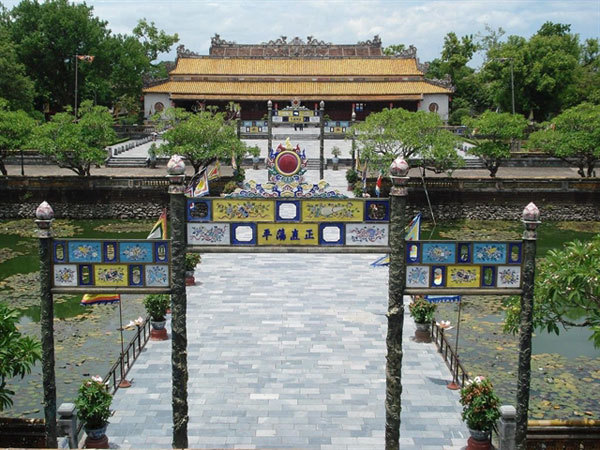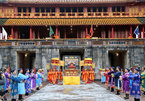 |
| Thai Hoa Palace is the most significant structure in Hue Imperial Citadel, but has suffered from severe deterioration. An excavation is taking place within the area of the relic to serve its upcoming restoration. Photo huetourism.gov.vn |
The excavation work has been approved by the Ministry of Culture, Sports and Tourism and presided over by Le Thi An Hoa, head of Scientific Research Department of Hue Monuments Conservation Centre.
According to Hoa, the work aims to shed more light on the relic to serve its preservation and restoration in the future. The total excavated area is around 66sq.m on both sides of the palace.
The Ministry of Culture, Sports and Tourism demanded the Hue Monuments Conservation Centre to protect the stratigraphy of the relic and be responsible for promoting locals’ awareness about culture heritage.
Artefacts collected during excavation must be temporarily preserved at the Hue Museum of Royal Antiquities to be prevented from being damaged or lost.
Based on the unearthed artefacts, the Hue Monuments Conservation Centre is responsible for reporting to the Minister of Culture, Sports and Tourism a plan to protect and promote the value of such artifacts.
Previously, the relic suffered severe deterioration and risk of collapse in bad weather.
The People's Council of Thua Thien Hue Province approved investment in the project "Preserving and restoring the Thai Hoa Palace relic" on February 26, 2021. The project will be implemented over four years with a total cost of about VND150 billion (US$6.5 million) from the central budget.
Thai Hoa Palace, located in Hue Imperial Citadel, was built in 1805 under Emperor Gia Long (1762-1820). The building is symbolic of the power of the Nguyen dynasty and served as a revenue for many important imperial events such as the coronation ceremonies, the emperor's birthdays, the receptions of ambassadors and dynastic meetings.
In particular, the place houses the thrones of 13 Nguyen emperors.
Over the past 200 years with 22 restoration projects, the relic has been seriously degraded.
Some wooden structures have become rotten and unsafe. Recently, typhoon Noul in 2020 damaged part of the roof tiles on the right side of the palace.
The excavation work is taking place when Hue Imperial Citadel and other tourist attractions in Thua Thien Hue Province have stopped receiving visitors since May 11 to prevent the spread of COVID-19. Their re-opening day is not yet known.
The Hue Monuments Conservation Centre is required to handle the environment of the relics and spray disinfectant to prevent the virus at the Imperial City and the mausoleums of Nguyen Emperors.
Prior to the outbreak of the pandemic, the complex of relics within the ancient imperial capital of Hue, including the Museum of Royal Antiquities and the mausoleums of the Nguyen Emperors received hundreds of domestic and international visitors a day. It is one of the major tourist attractions in the province.
Last year, the total number of visitors to the province was estimated at 1.68 million, a decrease of nearly 65 per cent, of which, international visitors are estimated at 558,800, a decrease of nearly 75 per cent. The revenue from tourism in the year is estimated at VND3.839 billion (US$167,000), down 66 per cent.
Meanwhile, 24 travel agencies and businesses in Hue were hit by the pandemic and forced to pause operation.
Many other tourism businesses are operating with a considerable reduction of employees. Nearly 80 per cent of accommodation businesses have closed, causing revenue to decrease by more than 80 per cent compared to the same period in 2019.
VNS

Calendar distribution ceremony enacted in Thua Thien-Hue
The Hue Monuments Conservation Centre on January 1 hosted an opening ceremony for Ngo Mon space and re-enactment of Ban Soc ceremony (ceremony to distribute calendars for royal mandarins during the Nguyen Dynasty).